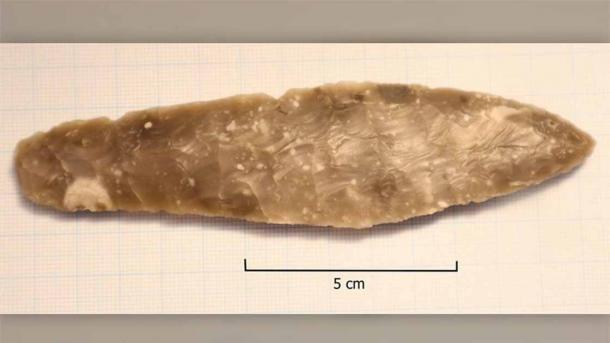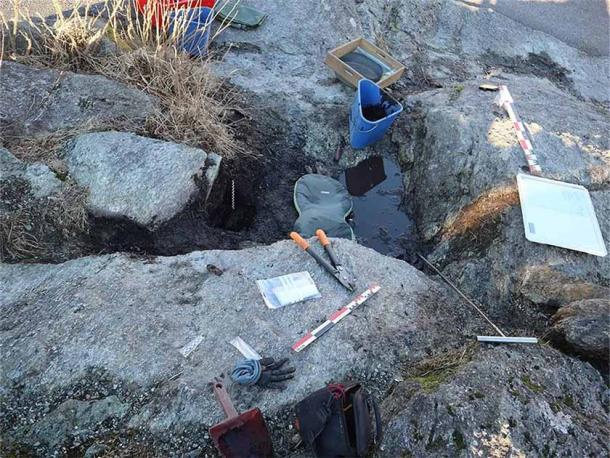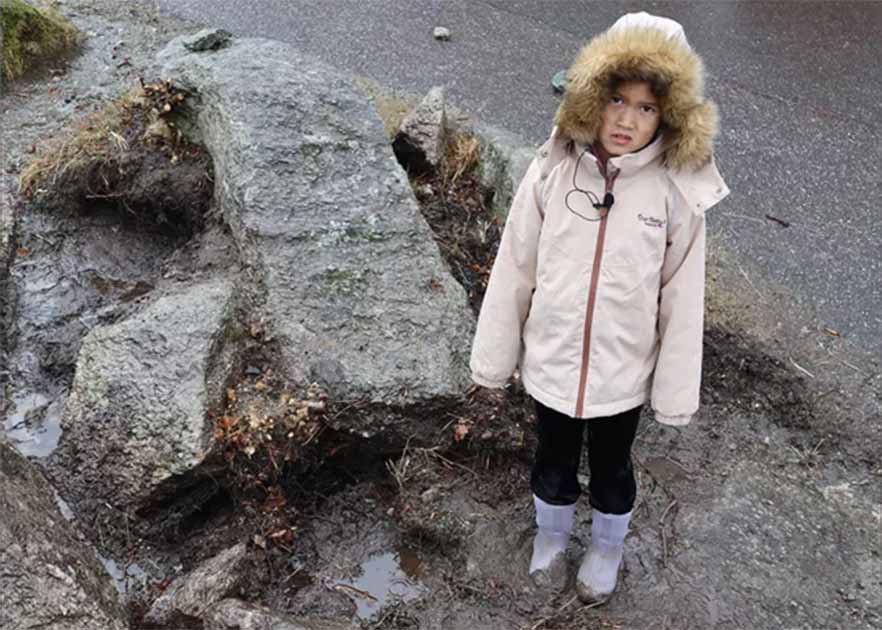Eight-Year-Old Norwegian Girl Finds 3,700-Year-Old Stone Dagger at School
An eight-year-old girl from Vestland county in southwestern Norway was playing outside at her school when she found something unusual lying in a rocky section of the play yard. It was not a toy or ball lost by another student, but a flint dagger carved by ancient peoples who occupied the region near the end of Norway’s Neolithic period, approximately 3,700 years ago.
The young girl, identified only as ‘Elise’ in the Norwegian press, didn’t know what the sharp-pointed stone object was when she spotted it slightly hidden beneath the edge of a small boulder. She took it immediately to her teacher, Karen Drange, who knew what Elise had found was some kind of ancient artifact.
Ms. Drange contacted the Vestland county council, who soon dispatched archaeologists to take a look at the fascinating object. After completing a thorough examination of the dagger at their facilities, these experts were able to recognize the flint dagger for what it actually was, and they ultimately dated it to the year 1,700 BC.
- Neolithic Skeleton “Lovingly Buried” in Fetal Position
- Debate continues over whether Stone Age people were peaceful or warlike

The nearly 5-inch-long (12 centimeters) flint dagger was likely crafted during the Neolithic period about 3,700 years ago. (Vestland County Municipality)
A Rare Neolithic Treasure, Discovered by Accident
The finely-carved flint knife is nearly five inches (12 centimeters) long. Notably, flint cannot normally be found in Norway, meaning either the stone or the dagger itself must have been imported from elsewhere. One of the Vestland County archaeologists who studied the knife, Louise Bjerre Petersen, deduced that the stone object likely came from the other side of the North Sea, from Denmark.
Naturally, the experts consulted on this case were excited about the possibility of finding other Neolithic objects in the same area. Perhaps they would be able to find signs of an ancient settlement on the school site, if they just dug down a little deeper into the earth.

Archaeologists further investigated the area where the Neolithic dagger was found. (Vestland County Municipality)
Shortly after the discovery of the flint dagger on May 2, a team of archaeologists affiliated with the Vestland County Council and the University Museum in nearby Bergen (Norway’s second-largest city) arrived at the school to perform excavations in the school play yard. Unfortunately these excavations proved fruitless, as no other artifacts of any kind were found beneath the soil or under the rocks where Elise had picked up the stone knife.
Louise Bjerre Petersen acknowledges that the flint dagger is a rare discovery. It may have been dropped by someone who was just passing through the area. Another possibility is that it may have been left behind as a sacrificial offering, during some type of ritual observance designed to ensure good fortune and nature’s blessings. According to Petersen, this kind of knife was often used during sacrificial ceremonies in prehistoric times.
- The Handle NOT the Wheel Was Our Most Revolutionary Invention
- The Stonehenge Calendar: A Prehistoric Approach to Time’s Passing
As for the dating of the dagger, this was done based on the object’s design and style. Knives with the characteristics of this one were regularly made and used by Neolithic cultures, possibly for cutting animal hides or for harvesting plants. The Neolithic period ended in Norway about 3,700 years ago, meaning the flint dagger must be at least that old (but it could be older).
In the second millennium BC, the people of ancient Norway had mostly completed the conversion from hunting and gathering to a more settled, agriculturally-based lifestyle. The earliest farms in Norway appeared around 2,400 BC, as the domestication of plants and animals had progressed far enough by this time to allow for successful agricultural activity. The people began to form villages and develop their capacities as craftworkers, producing pottery along with other cultural artifacts that are occasionally unearthed in archaeological excavations.
Schoolyard Archaeologists on the Prowl
This is not the only Neolithic period find that has drawn the attention of the public in Norway. A few months ago, an exhibit featuring a full-body reconstruction of a male adolescent who lived in the seventh millennium BC was opened at the Ha Gamle Prestegard Museum in southern Norway.
This young man, who was given the name Vistegutten, belonged to an ancient hunter-gatherer group and had died inside a cave without ever being buried. The skeletal remains of this individual were first discovered in 1907, and with the use of computed tomography (CT) scans modern researchers were able to create a 3D plastic replica of the boy that showed what he would have looked like when he was alive.
As for the flint dagger, it will be kept at the University Museum in Bergen, where the study of its characteristics will continue. It is uncertain if more excavations will take place in the area around the Vestland county school where it was found, although archaeologists are still curious about where the dagger came from. In the meantime, eight-year-old Elise and her schoolmates will continue to keep their eyes open and their heads down, as they patrol their schoolgrounds hoping to find more interesting objects that will excite their teachers and contribute to the study of their country’s fascinating ancient history.
Top image: Elise, an 8-year-old student, found the Neolithic stone dagger while playing near her school in Norway. Source: Vestland County Municipality
By Nathan Falde



















